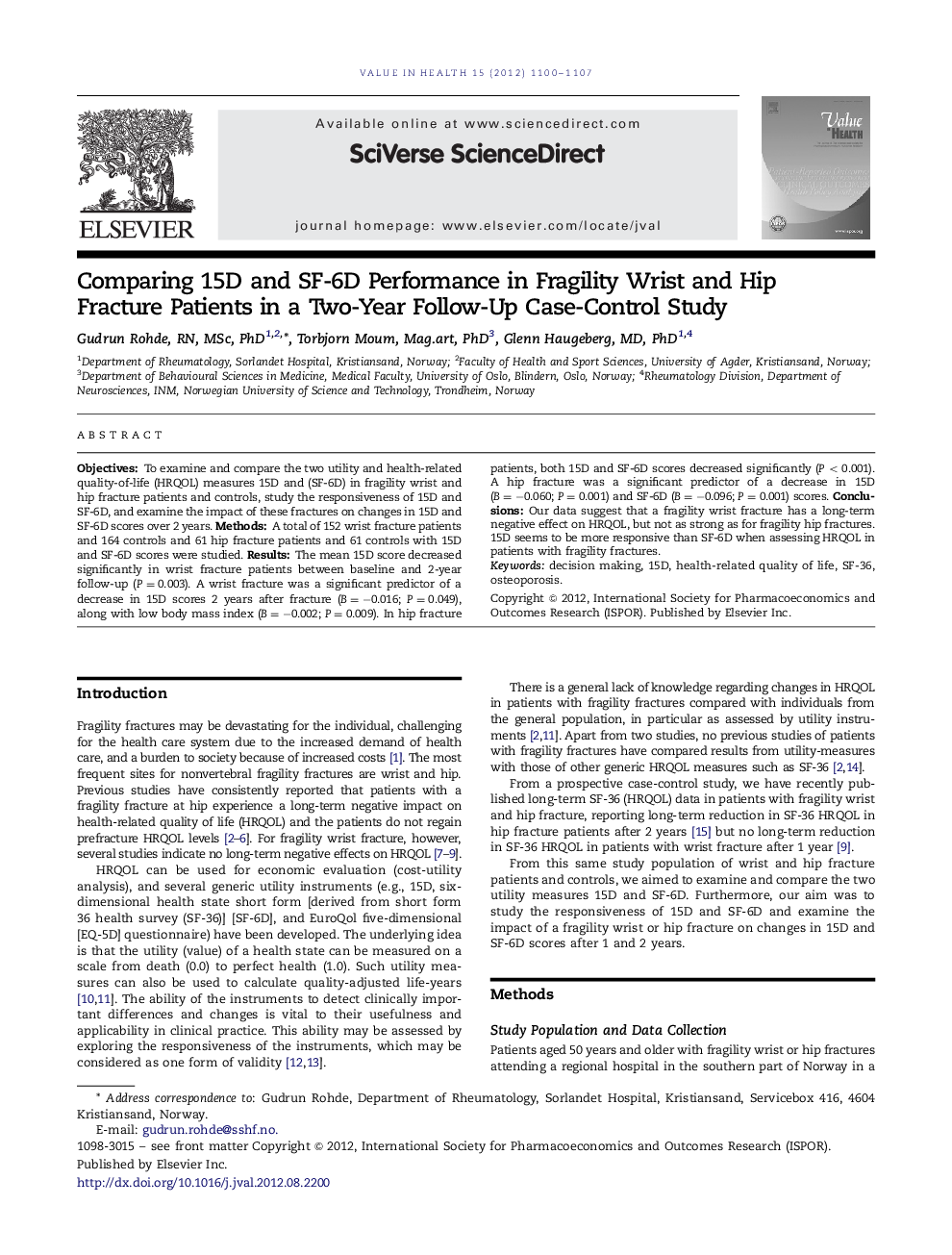| Article ID | Journal | Published Year | Pages | File Type |
|---|---|---|---|---|
| 987705 | Value in Health | 2012 | 8 Pages |
ObjectivesTo examine and compare the two utility and health-related quality-of-life (HRQOL) measures 15D and (SF-6D) in fragility wrist and hip fracture patients and controls, study the responsiveness of 15D and SF-6D, and examine the impact of these fractures on changes in 15D and SF-6D scores over 2 years.MethodsA total of 152 wrist fracture patients and 164 controls and 61 hip fracture patients and 61 controls with 15D and SF-6D scores were studied.ResultsThe mean 15D score decreased significantly in wrist fracture patients between baseline and 2-year follow-up (P=0.003). A wrist fracture was a significant predictor of a decrease in 15D scores 2 years after fracture (B=−0.016; P=0.049), along with low body mass index (B=−0.002; P=0.009). In hip fracture patients, both 15D and SF-6D scores decreased significantly (P<0.001). A hip fracture was a significant predictor of a decrease in 15D (B=−0.060; P=0.001) and SF-6D (B=−0.096; P=0.001) scores.ConclusionsOur data suggest that a fragility wrist fracture has a long-term negative effect on HRQOL, but not as strong as for fragility hip fractures. 15D seems to be more responsive than SF-6D when assessing HRQOL in patients with fragility fractures.
